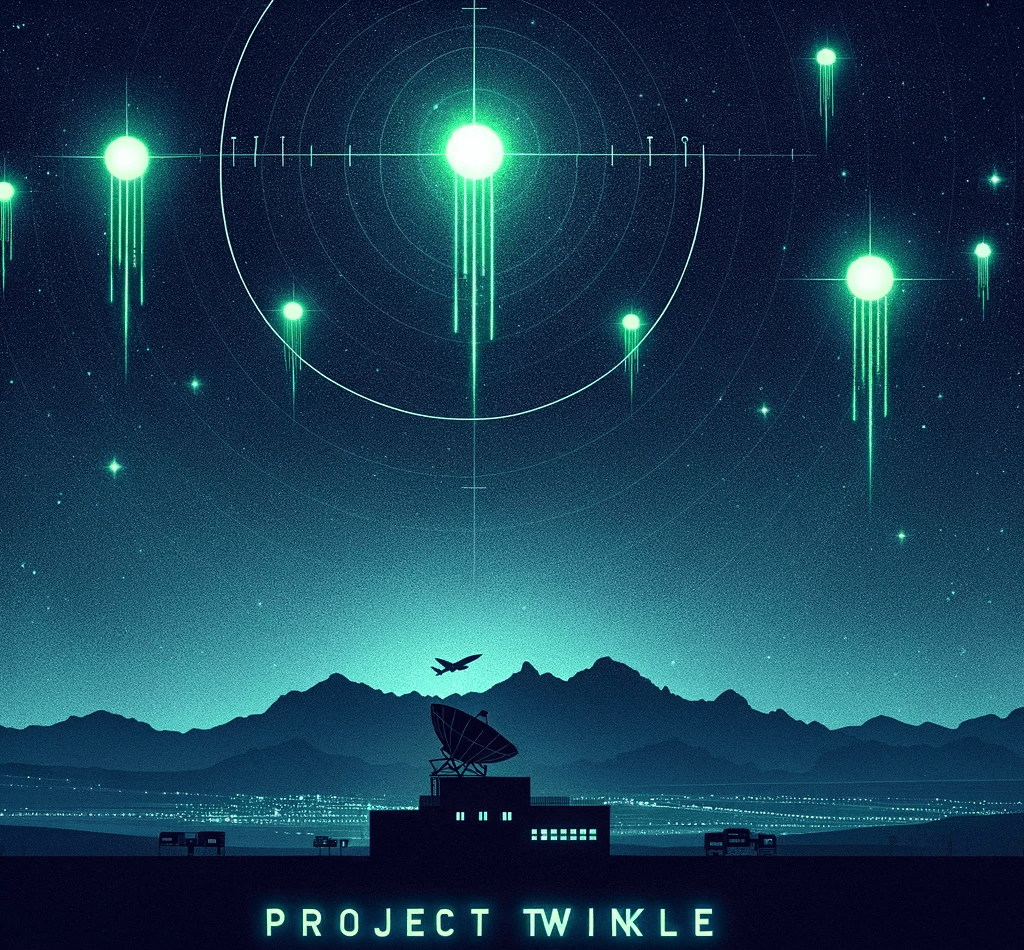Project Twinkle

As humanity’s technological prowess burgeoned, so did a series of perplexing aerial observations that challenged our understanding of the skies. With the advent of nuclear testing in the U.S., particularly in New Mexico, a flurry of unidentified aerial phenomena were reported, including the mysterious “green fireballs.” This spurred the U.S. Air Force to launch a series of investigations, namely Project Sign, Grudge, Blue Book, and Twinkle, to decipher these enigmatic sightings and determine their possible implications.
Project Twinkle was initiated to investigate the mysterious “green fireballs” that were reported in the skies over New Mexico during the late 1940s and early 1950s. New Mexico was, at the time, a significant region for atomic research and nuclear weapons testing, with locations like Los Alamos and the Trinity test site.
The frequent sightings of these green fireballs in proximity to such sensitive locations raised concerns about potential espionage or foreign technology. There was speculation (and concern) that these phenomena might be related to Soviet spying devices or other technological threats, although there wasn’t any strong evidence for such claims.
Project Twinkle involved setting up instruments to detect and analyze these fireballs.
In essence, the projects (Sign, Grudge, Blue Book and Twinkle) represent an evolving approach by the U.S. Air Force to address the UFO phenomenon, moving from initial curiosity and openness (Sign), to skepticism (Grudge), and then to a more methodical investigation (Blue Book). Project Twinkle, though separate, was part of this broader effort to understand unidentified aerial phenomena during that time period.
- Project Sign (1947-1949): This was the first official U.S. Air Force investigation into UFOs. The project began in response to a wave of UFO sightings after World War II. Its staff was somewhat divided: some believed the UFOs were of extraterrestrial origin, while others thought they had conventional explanations.
- Project Grudge (1949-1952): Following Project Sign, Project Grudge was more skeptical in nature. It sought to de-emphasize the importance of UFO reports and, in many cases, tried to explain away sightings as misunderstandings or misinterpretations of known phenomena.
- Project Blue Book (1952-1969): This is the most famous of the UFO investigation projects and followed Project Grudge. Under the leadership of Captain Edward J. Ruppelt, Project Blue Book took a more neutral and systematic approach to investigating UFO sightings. The project collected, categorized, and analyzed thousands of reports until it was terminated in 1969. The official stance was that none of the UFO sightings investigated posed a threat to national security and that there was no evidence they represented technology beyond what was known at the time.
- Project Twinkle (1949-1951): While not directly a successor or predecessor to the above projects, Project Twinkle was a shorter-lived initiative specifically focused on the “green fireballs” seen over New Mexico. Given the nuclear research and testing in the area, there was particular interest in understanding these phenomena.
The emergence of advanced technology has often been accompanied by unforeseen and occasionally inexplicable phenomena. One such instance has been the correlation between nuclear tests and the reported sightings of Unidentified Aerial Phenomena (UAP). When the immense energy of a nuclear detonation is unleashed, there have been multiple accounts of UAP suddenly becoming visible in the vicinity. Videos, witnesses, including trained military personnel, have reported seeing unidentified objects hovering or moving erratically in the skies shortly after such tests.
The narrative of the U.S. Air Force’s engagements with unidentified aerial phenomena is a testament to the persistent human quest for knowledge in the face of the unknown. As nuclear explosions illuminated the skies, they seemingly also unveiled myriad unexplained aerial activities. While these projects, from Sign to Twinkle, offered insights, many questions remain unanswered.


